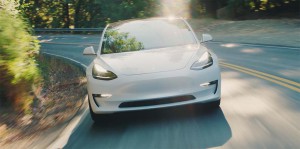
Tesla's Model 3 production has been the focus of the company much of the year, but now Elon Musk is going to need to look over his shoulder.
Its been a rocky road for Tesla during the past year, the automaker struggling to get production of its critical Model 3 under control. But just as the factory in Fremont, California, gets into gear, Tesla is facing a new problem that could prove equally challenging.
Jaguar fired the first shot recently with the launch of its I-Pace battery-electric vehicle. Now, Mercedes-Benz is getting ready to plug in, but rather than target a pricey niche, the electric EQ C crossover the German maker will introduce next week takes direct aim at Tesla’s mainstream-priced Model 3.
And the assault will only accelerate in the months to come, new long-range EV entries popping up at an ever-increasing pace over the next few years to the point that, by some estimates, there could be as many as 100 alternatives in U.S. showrooms by very early in the decade.
The Jaguar I-Pace was one of the first serious long-range alternatives to Tesla to hit market, the electric crossover taking aim at the Model X. Jaguar doesn’t expect huge volumes, though it did announce a deal with Waymo earlier this year that will put as many as 20,000 of the I-Pace CUVs in the Google spinoff’s ride-sharing fleet during the next several years.
(Foot in mouth? Musk raises new concerns about leadership by publicly reviving old spat. Click Here for the story.)
Daimler AG has been teasing its new offering for several weeks with a series of close-ups and interior pics. It will formally lift the cover on the new battery-crossover on Sept. 4. It won’t be the first all-electric model from the Stuttgart-based manufacturer. It previously offered a low-volume – and low-range – version of its B-Class for the California market. This time, it will be pushing for some real volume by driving down cost and pushing range up to what is expected to be more than 200 miles per charge.
Perhaps more significantly, the compact model will serve to launch an all-new brand-within-a-brand, Mercedes-EQ. And, over the coming years, it will be fleshed out with an array of long-range models covering a spectrum nearly as broad as the traditional Mercedes-Benz family, with the smaller EQ A set to follow in about a year.
Together, EQ A and EQ C pose a potentially existential threat to Tesla because they take essentially direct aim at the California battery-carmaker’s volume offering. In fact, they could be all the more deadly because they reflect the broader shift in the U.S. new vehicle market from sedans and coupes to SUVs and crossovers. Tesla has a high-end battery-CUV on the market, the Model X, but the smaller and more affordable Model Y is still more than a year from production.
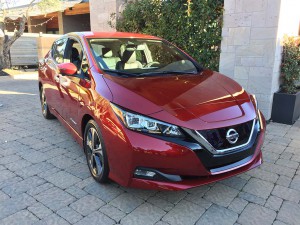
Nissan's second-generation Leaf battery-electric arrives just as its predecessor was supplanted as the best-selling electric vehicle.
The EQ C will hit the market only slightly ahead of Audi’s first long-range offering, meanwhile, a crossover roughly the same size as its popular Q5 model. It’s expected to be a bit less expensive than the Jaguar I-Pace, though higher-priced than the Tesla Model 3.
By this time next year, the floodgates will really begin to open, posing an ever bigger challenge to Tesla. Nissan, which had the world’s best-selling EV until last year, recently launched a second-generation version of its Leaf sedan. The new model is a tweener: while offering a roughly 50% bump in range it still manages only 150 miles per charge, but an extended-range battery pack topping 200 miles is coming.
General Motors, until now, has produced the only mainstream-priced Model 3 alternative, the Chevrolet Bolt EV. It promises to add two more long-range offerings in 2019. Though it has yet to offer any details, at least one is widely expected to be a crossover, increasing its potential audience significantly.
Then, at the other extreme, is Porsche, which will launch its first all-electric model, the Taycan. Originally known by the code name Mission E, it won’t be quite as fast off the line as a Model S with optional Ludicrous Mode, but where the Tesla sedan will quickly see its batteries and electronics overheat when pressed hard, Porsche promises Taycan will be able to deliver lap after lap of full performance.
(Click Here for more about Tesla staying public; CEO Musk facing more scrutiny.)
By the beginning of the new decade, analysts forecast it will be difficult to find a brand that won’t offer a long-range electric model. Ford has, until now, offered models like the Focus Electric, which could manage no better than about 100 miles per charge. It is developing several new long-range offerings. While most will come in at the low end, it’s also working up a high-performance electric sports car currently going by the code name Mach 1 and is expected to be a cross between a Mustang and a coupe-like crossover.
Toyota is building a new U.S. assembly plant in a partnership with Mazda that will see the two Japanese carmakers jointly develop and produce several long-range offerings. Honda, which has a relatively short-range all-electric version of its Clarity nameplate, is also working up a long-range EV.
The electric assault could be particular fierce at the upper extremes. Fiat Chrysler’s Alfa Romeo and Maserati brands have promised to unleash a wave of plug-in hybrids and all-electric models, and they will be positioned as the top-performing models for the two brands, Alfa and Maserati chief Tim Kuniskis told TheDetroitBureau.com earlier over the summer.
Even Aston Martin will enter the fray with an all-electric SUV due out in 2020, and a sedan to follow a year later. Both will be badged Lagonda, reviving a brand that hasn’t been seen in several decades. Going forward, Aston CEO Andy Palmer told TDB last week, all Lagondas will be battery-electric.
Tesla isn’t exactly sitting still. It is working up that compact Model Y crossover, an all-new version of its original Roadster, and even an all-electric pickup – with a commercial semi-truck also in the testing phase.
But Tesla is facing significant turmoil, much of it caused by CEO Elon Musk in recent months, including an SEC probe into his claim of having funding to take the company private. Musk has since backed off on that plan and some experts believe the company now will need to raise more capital to fund its aggressive product program. Musk denies this and insists it will deliver a significant profit going forward.
(To see more about Musk lamenting “excruciating” pressures at Tesla, Click Here.)
Perhaps, but it will have to be looking over its corporate shoulder a lot more in the future as better-funded competitors come at it from all quarters.

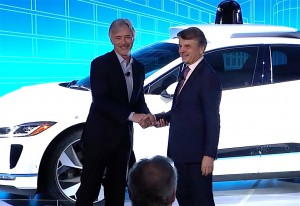
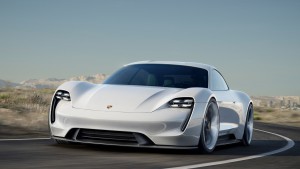
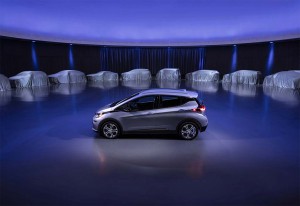
I am not even an American, but even so I am stupefied when I see American news channels seemingly gloat when reporting that English, Japanese and German car manufacturers might come and eat away at the market share of an American company. And that at a time when your own president is pouting like a three year old that “Europeans don’t buy our cars”. That’s true, you can drive for months in Europe and never see an F150 – America’s best selling car but ridiculously impractical there. Tesla’s though.. you can’t drive for 5 minutes without seeing one.
But luckily for those who would like to see an American company succeed, there is always the knowledge that Tesla already produces many times more Model S and X today than all their would-be-competitors’ intended EV production rates in 2019 or 2020 put together. And on top of that, there is the Model 3 of which Tesla produces more cars per month today than their competitors will produce per year.
And the final and most important reason why Tesla’s sales won’t (and don’t) even see a DENT because of this “competition”: EV’s don’t target other EV’s any more than a few wolves in vast fields of sheep wil target each other. It is the opposite, actually, the more viable EVs are out there, the more commonplace it will become, the better the charging infrastructure will become, the more the benefits of EVs over ICE vehicles will become known and shared. At this point in time, EV manufacturers will BOOST each others sales rather than cannibalize it.
This is not conjecture. This is already statistics. But it is almost fun to see Tesla shorts and their communication channels bend over backwards to ignore all the obvious facts and clear cut numbers and, very creatively, keep searching for comparisons where Tesla doesn’t come out on top – even if it is by comparing production numbers per year with numbers per month, or comparing racetrack lap times between exotic supercars and spacious family sedans.
I wasn’t aware that so many Teslas were in Europe. Just out of curiosity, how many of the other mainline EVs are produced on a monthly basis, ie. Nissan Leafs, Chevrolet Bolts, etc.?
We’re going to need to do some digging on that, Allen…
About 11k Leafs (Leaves?) were sold last year in the US – they have taken a pretty big hit from the peak of 30k in 2014.
Chevy sold about 23k Bolts last year, and this year is looking to be quite a bit less.
Tesla sold 24k Model 3s in August.
So yeah, the Model 3’s current competition is an order of magnitude lower in sales.
But it is worth note that Bolt and Leaf sales are tanking while Model 3s ramp up. This could suggest quite a bit of “electric cannibalism”, contrary to Kilzo’s suggestion.
Competition for Tesla?
When?
Jaguar is the only legacy car maker that makes a decent EV now but even it lacks range and so many of the advanced features of Model 3.
ALL of the others? “By the beginning of the next decade” That is laughable if you’re suggesting that Tesla is under assault. By the beginning of next decade Tesla will be dominating the market as the other EV’s come to market.
Why are the others taking so long? Lack of real commitment to the EV really. As they’re being dragged into the market unwillingly. What is their battery technology like? What are their sources for those batteries. Tesla has resolved that issue by manufacturing the most advanced EV batteries out here for their own use.
Charging network? Let’s give that one to Tesla too.
Perhaps it is easier for a 10 year old company to start an EV company than it is for a hundred year old car company to commit to new technology. Being way to slow to embrace the EV market, the legacy car makers will never catch up.
David, I touched on many of these points in more other note, but a few more thoughts. Tesla DOES deserve credit for cracking the range barrier. A perusal of stories I personally have written for more than a decade will show I have long argued that a minimum 150, and more likely 200+, miles is necessary to get folks to seriously consider an EV, and that’s where Tesla broke through. As to Jaguar being alone? No, you also have the Chevy Bolt, with GM promising two more just by Q2 2019 and 20+ to follow. Porsche and Audi and a number of other manufacturers are following. Mercedes just showed the EQC and EQA quickly follows.
As to charging, note the rapid pace at which other automakers are either setting up or partnering with companies setting up rapid charging systems…and many of those, such as the systems being put in place by Electrify America (paid for with VW’s guilt money) will run at several times the kilowattage of the Tesla Superchargers, meaning the potential to add as much as 20 miles/minute.
The market is not there yet but, if the experts are to be believed, it is coming and a LOT of competition will be there waiting. Tesla has had a good rep, as had Musk, but safety issues, Musk’s seeming meltdown, etc., mean it is far from certain they will somehow win over masses of Mercedes, BMW, Audi, VW, Chevy, etc., buyers as the EV market fleshes out.
Paul E.
…..and furthermore!!!!!
I have to admit I am picking up my Model 3 in 2 weeks so I am a Tesla fan….
but having said that
1. I never would have bought the Tesla if it was advertised with a 200 mile range. Nissan is working on improving the range of the Leaf to over 200 miles…NOT IMPRESSED at all.
2. The Porsche is a beautiful looking car, but it can hardly be considered competition for the Model 3 or even the Model Y. Different buyer demographic completely.
3. Mercedes…”over the coming years”? Does that mean their cars are still sketches on a wall?
Sorry, but the bias against Tesla seems so thick you could cut it with a knife.
Hi, David,
We are NOT biased against Tesla but find ourselves regularly working to cut through smoke thicker than what Elon Musk exhaled on the Joe Rogan podcast. Putting things in perspective can be difficult and come across as being tough but we are also happy to report on positives about Tesla. We’d suggest that the automaker — Musk, in particular — has to take much of the blame for the way the media has been turning against it.
As to what Mercedes has coming “over the years,” not sketches at all…at least not the initial wave of products, starting with the EQC and the following EQA. With long lead times they are already well into development of vehicles that won’t be out until 2021 and even 2022. By around 2020-2021, meanwhile, there could be north of 100 long-range electric vehicles on the road, according to IHS Automotive, the Boston Consulting Group and others. Virtually every manufacturer, from entry to ultra-lux, is working on such products. Will Tesla be able to fight them all? It really isn’t clear and depends on a lot of factors which we’ve touched on numerous times.
Paul A Eisenstein
Publisher, TheDetroitBureau.com
As always Paul, your stories and your replies are professional and fact based. You and those of similar conviction are an honor to the profession of journalism. Thank you.
Thank you, Allen. I take my role seriously and I hope I continue to live up to your expectations.
Paul E.